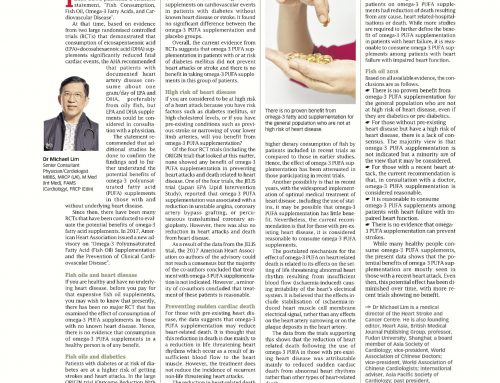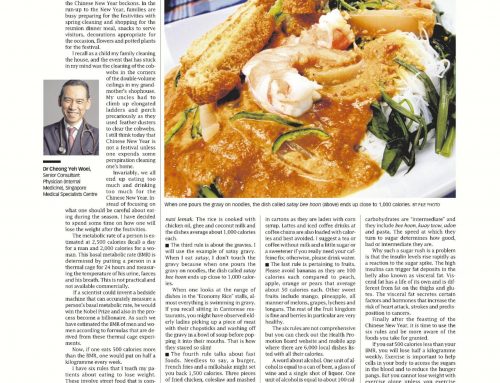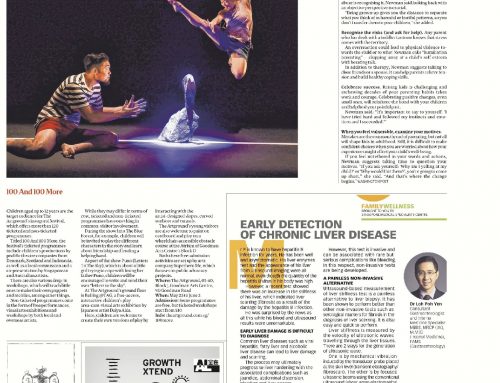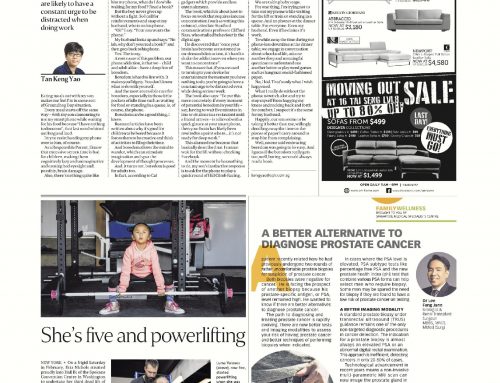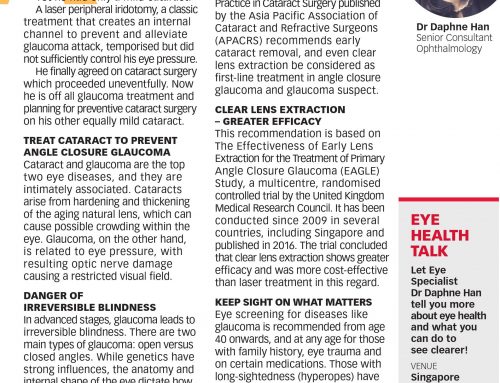While high blood pressure is commonly managed by many physicians and there are guidelines for management of high blood pressure in the general population, there are certain situations where the usual approach to blood pressure management needs further understanding and fine-tuning according to the prevailing clinical situation. This week, management of high blood pressure in patients on renal dialysis, the elderly frail and those on cancer drugs will be reviewed based on the latest scientific evidence.
Optimal Blood Pressure for patients on kidney dialysis
Patients with kidney failure requiring dialysis often have blood pressure values that fluctuate during dialysis and out of dialysis. More than 80% of patients undergoing dialysis have high blood pressure, and yet despite being under the care of physicians 70% of these patients continue to have elevated blood pressures.
The context of letting the SBP be kept at a range considered as being in the hypertensive range for the general population arises from data from epidemiology studies where the highest risk of death is associated with low blood pressure and the lowest risk of death is associated with a blood pressure considered to be within the hypertensive range. This paradoxical U-shaped relationship only applies to blood pressure measured within the dialysis centre, prior to and after dialysis while in the dialysis centre.
On the upcoming August 2017 issue of Hypertension journal, in the CRIC Study (Chronic Renal Insufficiency Cohort), it is reported that the U-shaped relationship between SBP also extends to cardiovascular events (heart failure, heart attack, ischaemic stroke, and lower limb artery disease). The researchers found that the nadir risk was an SBP of between 140 and 170 mm Hg. However, for the non-dialysis SBP (SBP measured outside the dialysis centre), the relationship between the SBP and cardiovascular events was linear.
That means that the risk of cardiovascular events increases with the increasing SBP. For example, it was found that those with non-dialysis > SBP of 128 mm Hg had more than double the risk of cardiovascular events when compared to those with non-dialysis SBP ?112 mm Hg.
Hence from a blood pressure perspective, during dialysis, the aim should be to maintain an SBP of 140 mm Hg to 170 mm Hg and after leaving the dialysis centre, to keep the SBP less than 120 mmHg if there are no contraindications such as underlying disease of brain arteries.
Blood pressure in the elderly
There is a common fear that the blood pressure in the elderly should not be lowered to optimal targets as there is concern that the lowered blood pressure will increase the likelihood of falls in the elderly. The REGARDS study (Reasons for Geographic and Racial Difference in Stroke) published in the Hypertension journal in June 2017, provides some answers and insight into this concern. The study concluded that systolic BP, diastolic BP, and the number of blood lowering drugs taken were not associated with risk of serious fall injuries. The study concluded that indicators of frailty were associated with increased risk for serious fall injuries among the elderly. Additional evidence from the SPRINT (Systolic Blood Pressure Intervention Trial) showed that lowering the SBP to 120 mm Hg versus 140 mm?Hg did not increase the risk for serious falls in the participants ?75 years of age.
In a systematic review and meta-analysis of 74 studies on risk factors for falls by Deandrea published in Epidemiology journal in 2010, certain indicators of fragility such as cognitive impairment, depressive symptoms, impaired mobility (includes those with gait problems or visual problems) and a history of falls were associated with increased risk of falls in the elderly.
In SPRINT, intensive treatment of SBP with a target goal of less than 120 mm?Hg lowered the risk for cardiovascular events and death as compared with the standard target goal of <140 mm?Hg. The current evidence supports the lowering of blood pressure to optimal levels to achieve the best outcomes for the elderly and the attainment of optimal blood pressure goals do not increase the risk of falls in the elderly. Hence, to reduce falls in patients with high blood pressure, measures should be taken for those elderly patients who have 2 or more indicators of frailty to address the risk factors for fall.
Cancer treatment and blood pressure
Proteins called VEGFs (vascular endothelial growth factors) and their receptors (VEGFR) are important for the development of new blood vessel and vascular health. Abnormalities in the VEGF–VEGFR results in abnormal blood vessel production which then contributes to the growth of tumors. As the tumour grows rapidly, it needs new blood supply through the development of new blood vessels. The development of treatment modalities (VEGF– VEGFR inhibitors or VEGFIs) that can inhibit this has resulted in improved survival outcomes. Currently, there are four major classes of VEGFI being used, including monoclonal VEGF antibodies (bevacizumab), monoclonal VEGFR antibodies (ramucirumab), soluble decoy receptors (VEGF traps; aflibercept), and small molecule VEGFR tyrosine kinase inhibitors (sunitinib, cabozantinib, pazopanib, axitinib, vandetanib, and regorafenib).
While VEGFIs have become the first-line treatment for some cancers, the use of this treatment is associated with toxicities, especially heart conditions such as high blood pressure, heart artery disease, heart failure and abnormal heart rhythms. The commonest toxic effect is high blood pressure and the most serious toxic effects are fatal heart disease and reversible damage to the white matter of the brain.
High blood pressure is a very common occurrence with the use of VEGFI and is dose dependent. The blood pressure increases within hours of administration of the VEGFI and is often more than 150/100 mm Hg. The blood pressure can reduce rapidly upon withdrawal of VEFGI treatment. VEFGI treatment is associated with damage to the heart muscle ranging from just swelling of the main heart pump chamber to heart failure and even shock and death. Studies have shown that about 1 in every 3.5 patients given VEFGI treatment have the reduction in the function of the main heart pumping chamber.
The use of VEFGI also increases the risk of clot formation, especially in arteries. This also results in an increase in the risk of insufficient blood supply to the heart and heart attacks as well. In one study using sunitinib, 1% of the patients had a heart attack and 1% of the patients died from heart disease. VEFGI treatment is also associated with kidney injury and is reflected by the presence of protein in the urine and occasionally an increase in the blood serum creatinine.
Hence, for patients on VEFGI therapy, it is prudent to get a cardiologist to manage the heart problems that may arise from treatment to avoid a heart-related death.
Your blood pressure is a reflection of the health of your heart, your arterial system, and the hormonal status. Overtreatment or undertreatment of patients with high blood pressure can have unintended consequences. Hence, understanding the need to make adjustments in the treatment of high blood pressure in different clinical situations can help you get the best outcomes.


